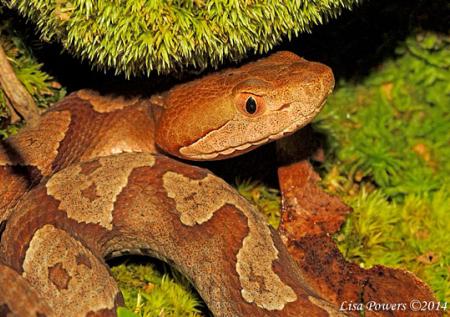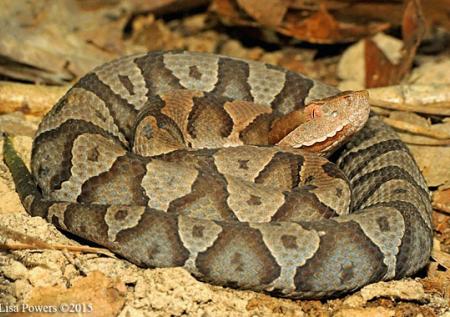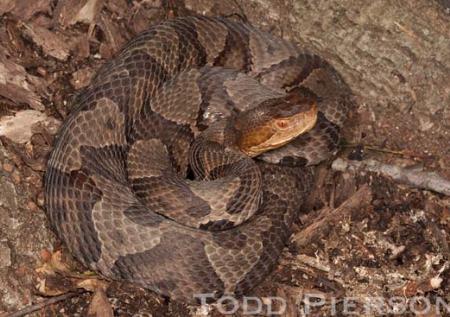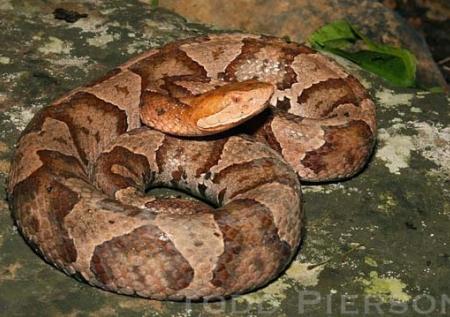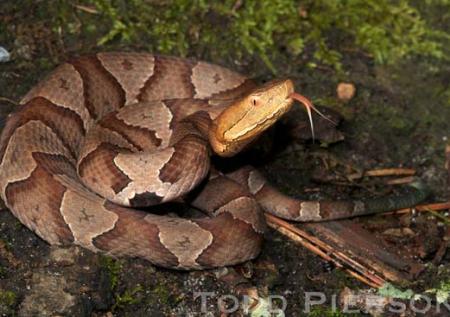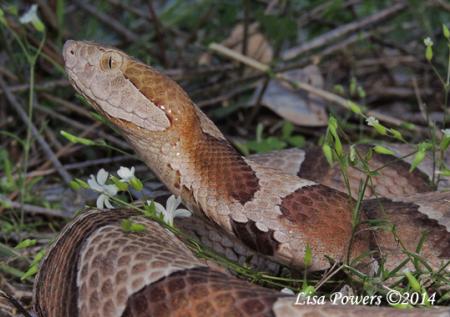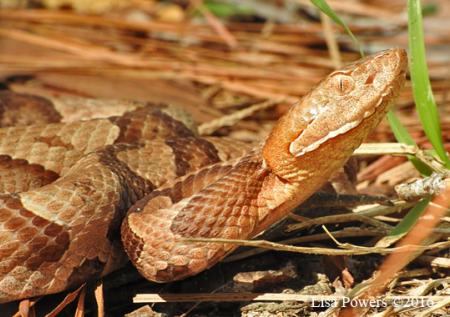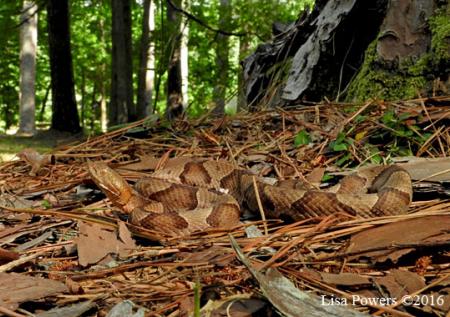Copperhead (Agkistrodon contortrix)
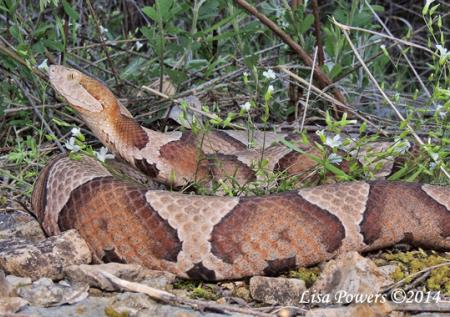
Click a thumbnail below to view the larger image:

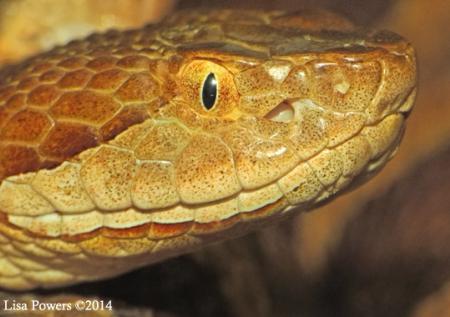
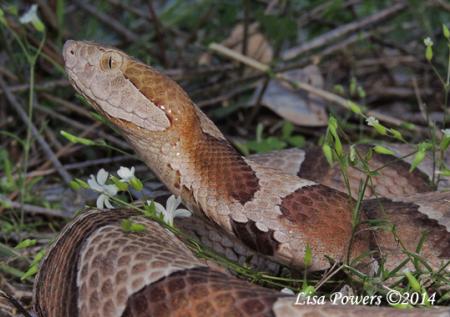
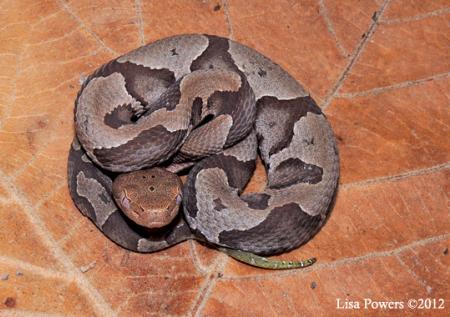
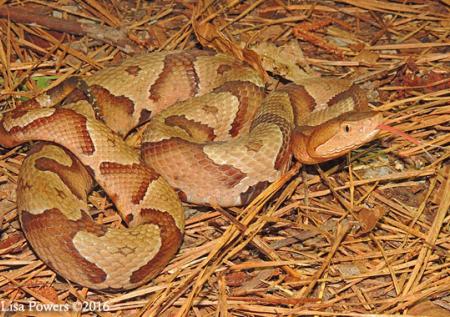

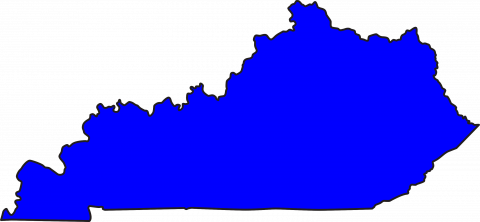
Have you seen a Copperhead?
Click the Report Snake button below to reporting seeing a Copperhead.
Report Snake SightingAppearance
Copperheads are beautiful snakes. They have a coppery colored head, vertically oriented pupils and facial pits. Their dorsum (back) varies from a copper-red to brown. Most specimens have hourglass-shaped, chestnut-colored bands across the back. Dark spots between the bands are common. Juveniles tend to have a yellow-greenish tail tip, which fades with age. The belly is generally a pale brown. Scales are keeled, and the anal plate is single. Similar to all venomous snakes in Kentucky, Copperheads have a single row of scales posterior to the cloaca.
Size
The total length of most Copperheads is two feet or less. Large adults may occasionally reach 4 feet. They are stocky snakes.
Habitat/Range
Copperheads can be found statewide, although they are less common in the Inner Bluegrass Region. Preferred habitat includes rocky, wooded hillsides, lowland areas near streams, abandoned wood piles or rotting logs and mulch piles.
Natural History
Copperheads feed on small mammals, frogs, lizards, birds, and even insects (cicadas). Copperheads are venomous. They will strike and inject venom into prey, either holding until venom takes effect or releasing and tracking the dying animal by following an odor trail. Copperheads mate in spring and give birth to 7-8 live young (known as viviparity) in the early fall.
Notes/Miscellaneous
The main defense of Copperheads is to remain hidden. They blend in nicely with dead leaves on the forest floor. Copperheads are normally non-aggressive, and prefer to lie motionless until a threat has passed. However, when provoked they will vibrate their tail and strike. The bite is painful, but doesn’t typically cause a life-threatening injury. Regardless, medical treatment should be immediately sought if bitten by a Copperhead or any venomous snake in Kentucky.
Supplemental Images
